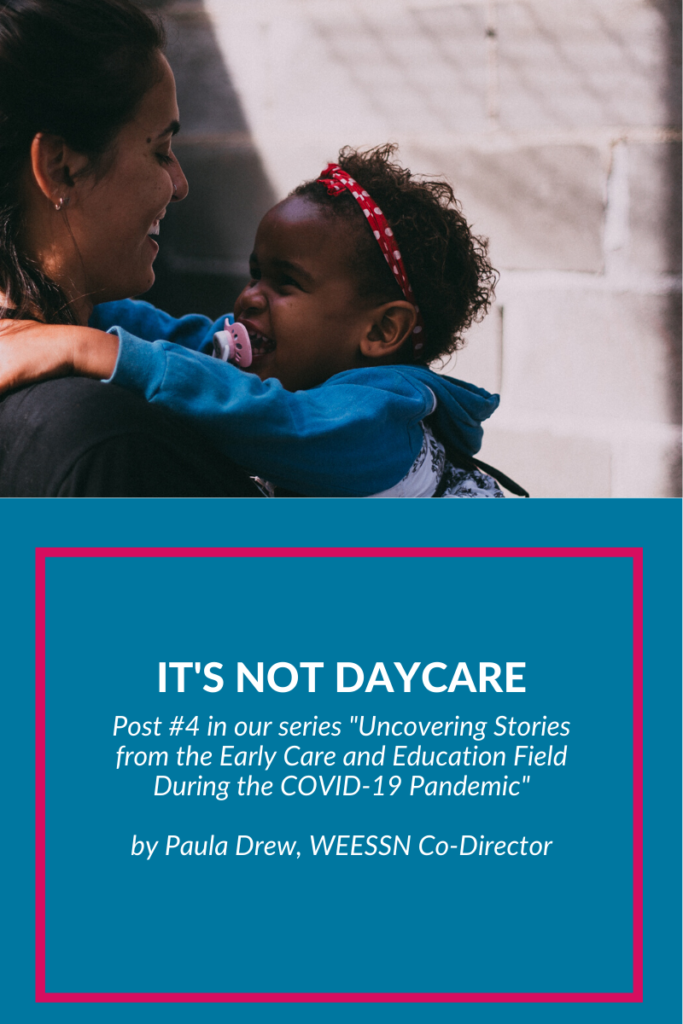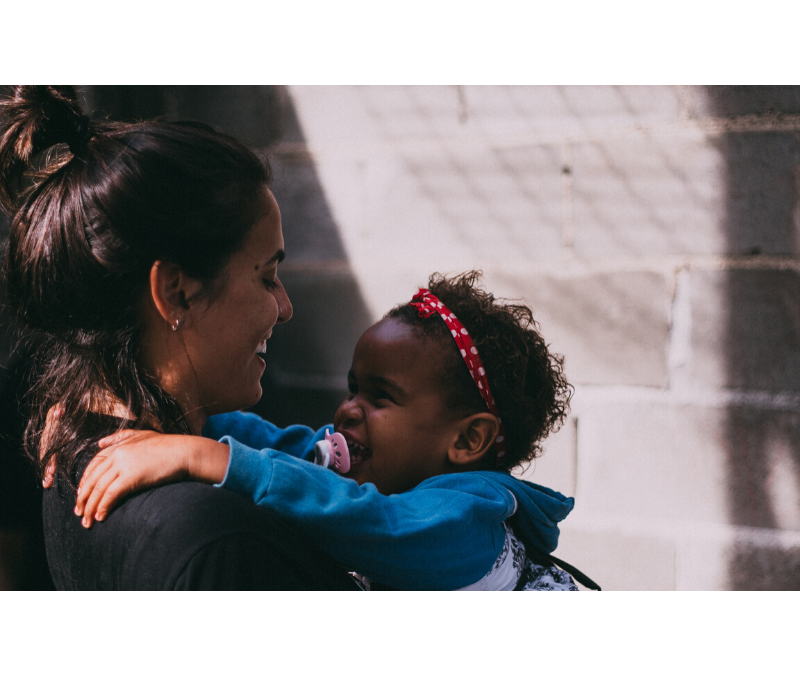by Paula Drew, Co-Director, Wisconsin Early Education Shared Services Network
This post is the fourth in the series, Uncovering Stories from the Early Care and Education Field During the COVID-19 Pandemic, based on in-depth interviews of child care providers across Wisconsin.
 I’ve spent the first half of this blog series talking about the essential nature of early care and education and why we should fund it as a public good. I’ve laid out the challenges of low wages, significant stress and burnout, and the intersection of new challenges connected to the pandemic with these existing issues. These themes are ones we hear about in the news as well — ‘it’s a necessary, but broken system.’ Yet, this is not the whole story; this work is so much more than its current headlines. This post is dedicated to the magic that happens in early care and education programs and the soulfulness of those that do this work 50+ hours a week.
I’ve spent the first half of this blog series talking about the essential nature of early care and education and why we should fund it as a public good. I’ve laid out the challenges of low wages, significant stress and burnout, and the intersection of new challenges connected to the pandemic with these existing issues. These themes are ones we hear about in the news as well — ‘it’s a necessary, but broken system.’ Yet, this is not the whole story; this work is so much more than its current headlines. This post is dedicated to the magic that happens in early care and education programs and the soulfulness of those that do this work 50+ hours a week.
When I ask early educators about their work, they talk about raising the next generation of thinkers, doers, and change–makers. They talk about helping children work through trauma and adverse childhood experiences. They talk about working in collaboration with parents as they navigate hard times with their children (think tantrums and bullying). They talk about really seeing children for who they are and helping them develop into the best version of themselves. The majority of kids in child care spend more waking hours there than at their home. During the pandemic, early educators are volunteering to care for children of essential workers in a variety of settings. They are doing story times on YouTube for children who are quarantining and are contributing to child–centered content for understanding the emotional complexities of living during the pandemic.
When I ask early care and education business owners and administrators about their work, they talk about supporting families, staff members, and children. They talk about their visions of carrying out the deep work of raising up the next generation within the unique populations that they serve. They spend a lot of time thinking about their larger communities and how they can contribute to positive change. During the pandemic, they have figured out how to operate their programs safely because, unlike the CARES funding for K-12 education, to receive Child Care Counts funds they had to be open or agree to reopen in order to receive funding. One director I spoke with said that she has been cooking and distributing dinners once a week to refugee neighbors. Others have purchased computers and supported school-aged children with online learning.
When I ask parents about their experiences in early care and education, they talk about child care providers as an extension of their own families — as confidants, counselors, experts in child development, and often as “miracle makers,” “gurus,” and “baby whisperers”. One parent I spoke with said, “choosing someone to be with my children 40-45 hours a week for 4-5 years straight was like choosing another parent in their life (but that’s what I love about family child care!).” Another said, “after our divorce, our child care provider was a rock of support for our whole family; we are forever indebted to her for her support during that time.” My own child care provider preformed the Heimlich maneuver and stopped my three–year–old daughter from choking on a mango, literally saving her life.
When I asked my daughters about their experiences in early care and education, they wax poetic about making spaceships out of giant boxes, sharing delicious meals with their friends, and exploring their community through field trips. They both agree, “those were the good ol’ days”.
The tasks involved in caring for and educating young children are seemingly endless and require a depth of expertise over a range of topics. Here are just a few that come to mind: lesson planning, recognizing and supporting children with developmental delays or disabilities, planning field trips, building character, solving problems, cleaning, serving food, communicating with parents, harvesting joy, conversing through diaper changes, running circle time, and supporting subject matter acquisition like math concepts, speech and language, preliteracy skills, civics, and social emotional learning.
When you own a child care business or manage it, you are in charge of balancing finances, strategic planning, marketing, grant writing, purchasing goods and materials, hiring, training and scheduling staff, paying bills, making sure parents pay on time, maintaining and fostering relationships with families and, more often than not, also unclogging toilets, cooking lunch, and learning yet another new online reporting program for one of many regulatory systems.
Family child care providers do all of the above, often for 12 hours a day, earn the least in this field and also share their home with children and families.
Working in this field is mentally, physically, and emotionally demanding. When people are well resourced and compensated in their jobs, they are more prepared to continually handle stressful professions. In the post Impossible Choices, I describe how razor–thin financial margins compress wages and cover little to no fringe benefits. Many well-meaning, but uninformed, people think that having a love of children allows you to somehow pay your rent in hugs. While doing meaningful work has intrinsic benefits, that alone was not enough before the pandemic as evidenced by the 40% turnover rate. Additionally, new data from the NAEYC questions whether this field will survive the pandemic.
Now our country will be looking to early childhood educators to help care for and educate school-aged kids too as schools and parents make grueling decisions on tackling the Fall school semester. How is it that as a society we invest the least in the ones who give the most to making this world a better place? They are always there to create the magic, solve the problems and prepare our children for the rest of their lives. Can you imagine a future without early care and education? Because without a significant bailout, that’s where we’re headed.

